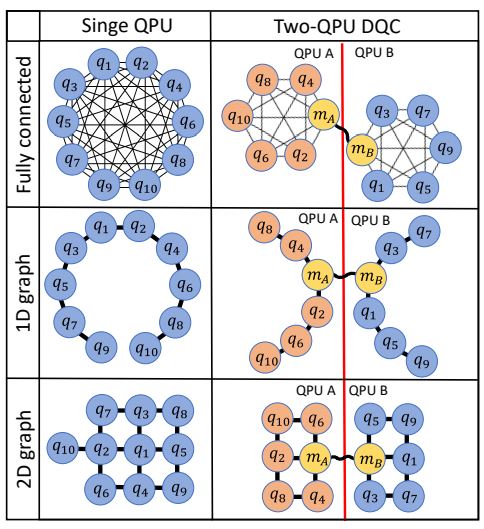
【舒宜萍、賴映秀淡水校園報導】 112年度國科會「大專學生研究計畫研究創作獎」,日前公布得獎名單,本校物理四胡少華、會計四蔡喬綺及英文系王享恩,分別以創新的研究成果獲獎。該獎項係國科會審查研究成果報告後,頒予評定為成績優良而有創意者,每年以200名為限,對於大專學生創新和研究能力而言,是非常難得的高度肯定。
胡少華研究計畫為「以分佈式量子計算提升噪雜中尺度量子電腦的可擴張性」,他說明該項研究利用多個量子計算處理器,在量子糾纏的幫助下,提升擴展量子電腦運算效能;並在專題中,成功建立一個評估分佈式量子計算方法效能的理論框架,為未來大尺度量子系統發展打下堅實基礎。指導教師,物理系助理教授吳俊毅稱許胡少華的努力,更分享該成果在8月26至30日本北海道大學舉辦的國際會議Asian quantum information science(AQIS)中,獲得最佳學生海報發表第二名的佳績。「考上清華大學物理系碩士班的他曾跟我說,若回到高三那年再選一次,還是會選擇淡江物理,因為CP值超高!」
Scalability enhancement of NISQ quantum computing through distributed quantum computing
Shao-Hua Hu(1) George Biswas(1) (2) Jun-Yi Wu(1) (2) (3) ∗
(1) Department of Physics, Tamkang University, New Taipei 25137, Taiwan, ROC
(2) Center for Advanced Quantum Computing, Tamkang University, New Taipei 25137, Taiwan, ROC
(3) Physics Division, National Center for Theoretical Sciences, Taipei 10617, Taiwan, ROC
Abstract. We employ quantum-volume random-circuit sampling to benchmark two- QPU entanglement-assisted distributed quantum computing (DQC) and compare it with single-QPU quantum computing. Based on our error model, we derive an analytical approximation of the average gate fidelity and show the one-to-one correspondence of three figures of merits, namely average gate fidelity, heavy output probability, and linear cross-entropy, which is shown to align with numerical simulations. The approximation is calculated from the extended connectivity graph of a DQC device. Furthermore, we provide a simple formula to estimate the average gate fidelity, which also provides us with a heuristic method to evaluate the scalability enhancement in DQC, and unveils the scalability enhancement in DQC for the QPUs with limited connectivity. The full version is available on [1].
Keywords: Distributed quantum computing, Quantum volume, Randomized bench- marking, Entanglement-assisted LOCC, Average gate fidelity
References
1S.-H. Hu et al., “Scalability enhancement of quantum computing under limited connectiv- ity through distributed quantum computing”, 10.48550/ARXIV.2405.10942 (2024).
